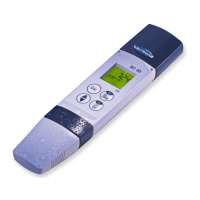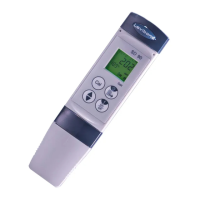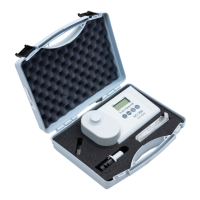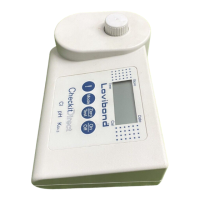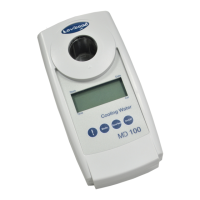The selection of the appropriate electrode depends on the application case
• The graphite 4-pole measurement cells (LC 12 or LC 16, for all previously mentioned
applications and: seawater, titration, waste water) offer the broadest application spectrum.
• For low conductivities (<100 µS/cm), stainless steel cells are beneficial (rain and purest
water, boiler water, osmosis and filter technology).
• For low conductivities (<1000 µS/cm), platinum electrodes with glass shaft are beneficial
(petrol, diesel)
6.8 Temperature compensation
The conductivity of aqueous solutions depends on the temperature. The temperature de-
pendence is heavily dependent of the type of solution. With temperature compensation,
measurements are expressed at a uniform reference temperature. The usual reference tem-
perature for this purpose is 25 °C.
6.8.1 Temperature compensation "nLF" according to EN 27888
For most applications, e.g. in the area of fish breeding and the measurement of above-ground
water and drinking water, the non-linear temperature compensation for natural water ("nLF",
according to EN 27888) is sufficient. The usual reference temperature is 25 °C.
The recommended usage range of the nLF compensation: between 60 µS/cm and 1000 µS/cm.
6.8.2 Linear temperature compensation and determination of the
temperature coefficient "t.Lin"
If the function of the temperature compensation is not precisely known, a "linear temperature
compensation" is normally adjusted in the device (menu, t.Cor = Lin, t.Lin corresponding to
TKlin). In simplified terms, that means that the temperature dependence is approximately the
same over the concentration range in consideration for the solution.
LFTX
Temperature coefficients around 2.0 %/K are most common.
A temperature coefficient can be determined, for example, by measuring a solution with
temperature compensation switched off for 2 temperatures (T1 and T2).
(LFT1-LFT2) • 100%
(T1-T2) • LFT1
TKlin is the value entered in the menu "t.Lin".
LFT1 conductivity at temperature T1.
LFT2 conductivity at temperature T2.
LF
Tref
=
LF
Tref
=
1+ • (Tx-Tref)
TK
lin
(100%)
